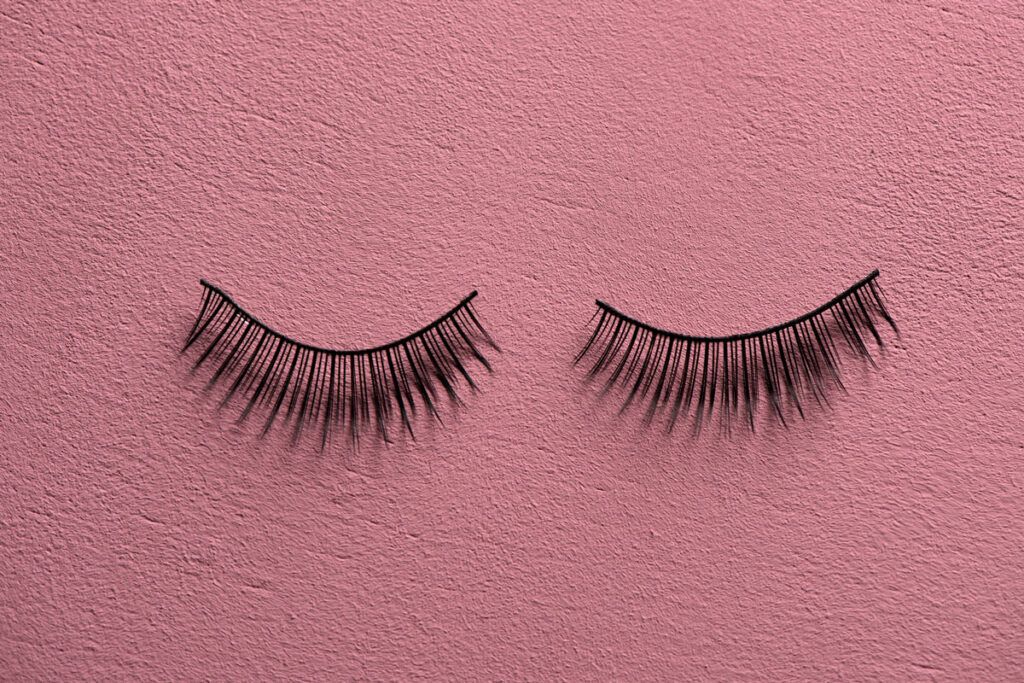Fake eyelashes are a popular beauty product. You might opt for fake eyelashes because you like the look or because typical lash-enhancing products irritate your eyes, like mascara and liner.
However, using fake eyelashes does come with certain risks. For example, some people are allergic to the glue or liners that come with fake lashes. Lash damage and eye infections are also possible side effects of wearing fake lashes.
Ensuring you apply fake eyelashes with clean hands is essential to safe application.
Are fake eyelashes safe to use?

Fake eyelashes are generally safe to use. However, the glue in some fake eyelash products can cause eye irritation and injury if it accidentally gets in your eye.
In some cases, fake eyelashes can also lead to skin irritation in this highly sensitive area. You can also be allergic to the chemicals in fake eyelash glues or liners.
What are the potential risks?
In most cases, fake eyelashes are safe to use.
However, some possible risks of wearing fake eyelashes include:
- allergic reactions
- damage to your natural lashes
- eye infections
An allergic reaction is more likely if the glue that comes with a fake lash product contains ammonia or latex.
If you develop an infection or an allergic reaction from wearing fake lashes, you may experience symptoms such as:
- itching
- burning sensation
- redness in the eye
- pain
- dry eye
- swelling in the eyelid
If left untreated, these symptoms can worsen and may lead to conditions such as:
These conditions can impact your natural eyelashes, causing them to fall out or regrow in an atypical way.
Another potential risk of wearing false eyelashes is being unable to properly or completely close your eyelids while sleeping, if you don’t remove them before sleep.
This can cause eye dryness and expose your eye to the collection of bacteria that populates the lash line, increasing your risk of developing a bacterial eye infection.
Not closing your eyelids properly while you sleep can also cause a calcification of the lash base, which may scratch the surface of your eye, leading to irritation, damage, and other potential complications.
Need a diagnosis or prescription quickly? Optum Perks offers personalized on-demand care in as little as 15 minutes with no video or appointment required. For $25, answer a few questions online and receive a diagnosis and treatment plan from a board certified healthcare professional. Get started here.
What can decrease the risk of side effects?
When you wear fake eyelashes, you can limit your risk of side effects in a few ways.
If you’re considering getting a professional lash application consider:
- reading reviews from other customers
- checking whether the establishment has certifications and a good safety record
- asking questions about the products they use and checking that you’re not allergic to any ingredients
- performing a patch test first
When applying fake eyelashes at home, consider:
- using products from reputable brands
- checking the product you plan to use isn’t expired
- performing a patch test on your skin before using lash glue or liner
- thoroughly cleaning your skin before and after applying fake lashes
- using clean tools and hands to apply lash extensions
Whether you go to a beauty professional or apply lashes yourself at home, it’s important to keep your lashes and eyes clean to prevent bacterial buildup and infection.
When to speak with a doctor
It’s important to speak with a healthcare professional if you experience an allergic reaction after applying fake eyelashes. They can determine the cause of the allergic reaction and advise on how to prevent future allergic reactions.
You should also contact a dermatologist or ophthalmologist if you experience signs of an eye infection, such as:
- pain in or around the eye
- light sensitivity
- watery eyes
- itching
- blurred vision
- dry eyes
- pus or eye discharge
- redness
- eye swelling
They may prescribe a topical antibiotic to treat your infection, such as dexamethasone (Decadron).
Summary
Fake eyelashes are typically safe to wear. However, like with any beauty product, irritation and allergic reactions are possible.
Maintaining proper hygiene while applying lashes is important. To prevent infection and irritation, consider:
- using products from a reputable brand
- testing products on a small area of your skin, like your wrist, to check for a reaction
- applying lashes with clean tools and hands
If you develop vision issues, an allergic reaction, or an eye infection after applying fake lashes, it’s important to speak with a healthcare professional.
If you need help covering the cost of medications, the free Optum Perks Discount Card could help you save up to 80% on prescription drugs. Follow the links on drug names for savings on that medication, or search for a specific drug here.
